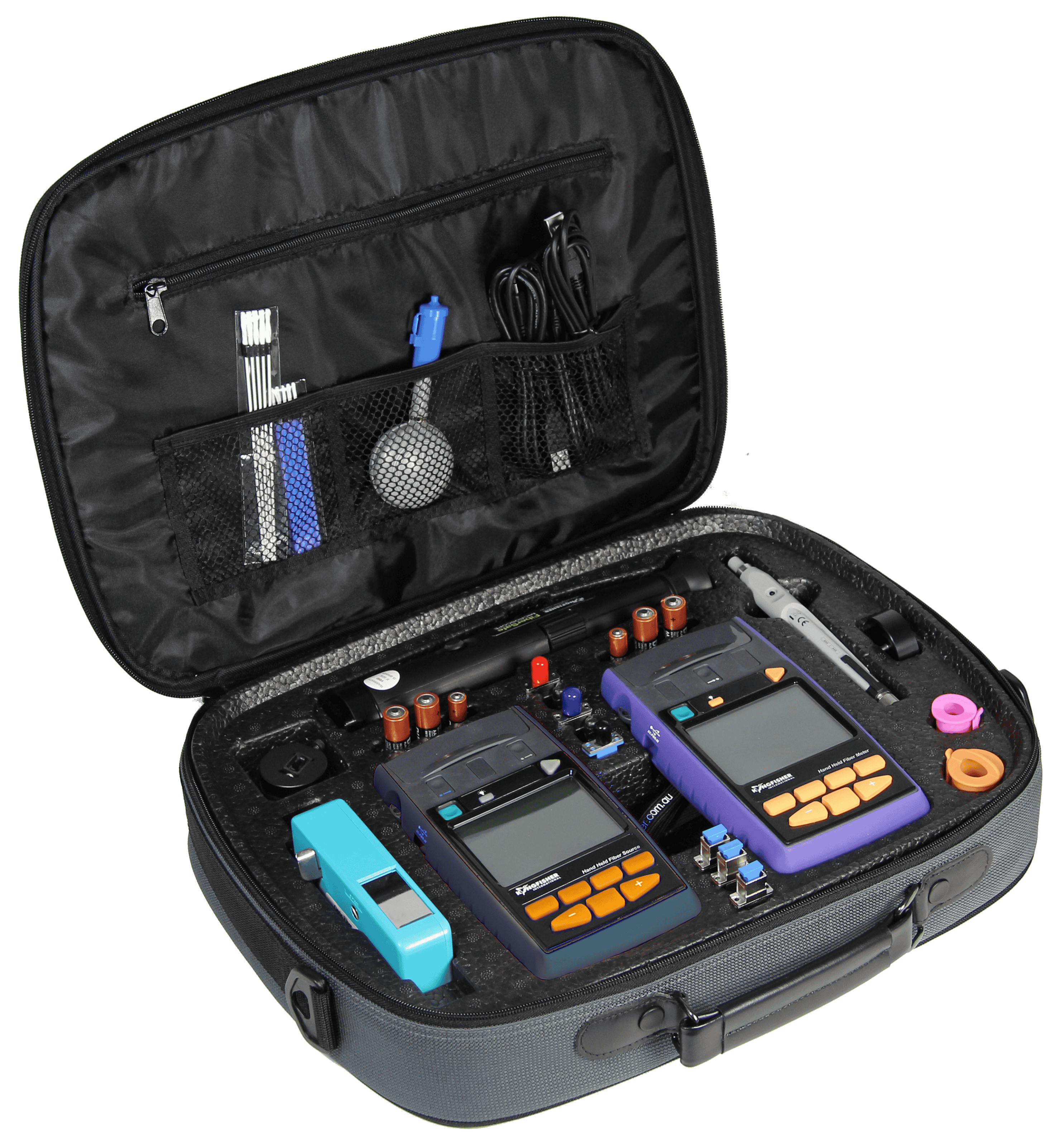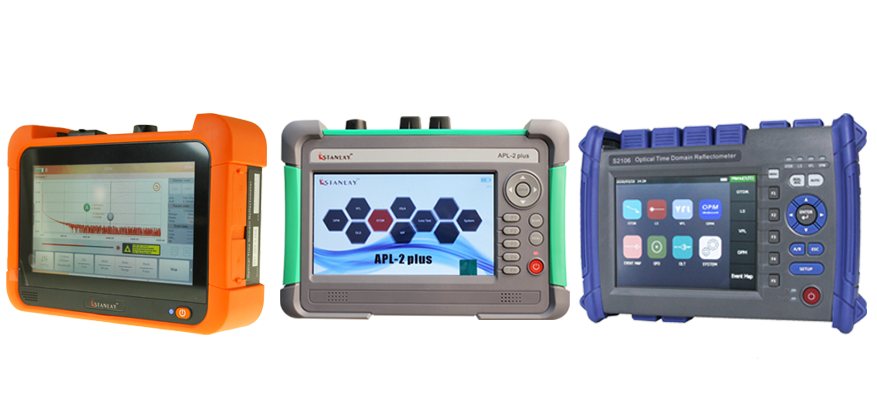From novice to expert: Getting started with optical fibre diameter analyzer
Wiki Article
A Comprehensive Overview to Optical Measurement System for Fiber Analysis
When it involves fiber analysis, understanding optical dimension systems is essential for examining performance and making sure quality. You'll explore vital techniques like interferometry and spectroscopy, which help you determine key specifications. But there's even more to it than simply these techniques; understanding depletion measurement techniques can considerably impact your network's performance. As you navigate via this guide, you'll reveal insights that might transform your technique to optical fiber.Understanding Optical Measurement Systems
When you check out optical measurement systems, you'll discover they're crucial for examining fibers with precision. These systems utilize light to analyze numerous attributes of fibers, including size, refractive index, and uniformity. By employing techniques like interferometry and spectroscopy, you can acquire valuable understandings right into the fiber's properties.You'll find that these systems are designed to decrease errors and enhance precision, ensuring trusted data for your analysis. Different configurations, such as single-mode and multi-mode systems, cater to particular fiber types, enabling you to select the most effective suitable for your needs.Moreover, the integration of advanced software program tools aids you interpret the data successfully, making it much easier to recognize any type of inconsistencies or problems. As you examine much deeper right into these dimension systems, you'll appreciate just how they improve the analytical procedure and enhance the total quality of fiber production and testing.Trick Specifications for Fiber Evaluation
Trick parameters for fiber analysis play a necessary duty in determining the quality and performance of fiber optics. When you examine a fiber, you'll wish to concentrate on features such as depletion, bandwidth, and modal dispersion. Attenuation measures the loss of signal strength as light trips via the fiber. A lower attenuation worth suggests much better quality and longer transmission distances - optical measurement system.Bandwidth refers to the data-carrying capability of the fiber and is crucial for high-speed interaction. You'll require to evaluate the transmission capacity to assure it fulfills your application needs. Modal dispersion, which develops from the different rates at which light journeys via different modes in multimode fibers, impacts signal clearnessStrategies for Attenuation Measurement

Bandwidth and Its Influence On Performance
Understanding data transfer is important for optimizing fiber efficiency, as it directly influences the amount of data that can be sent over a network. Greater transmission capacity suggests you can send out more information simultaneously, enabling for faster communication and much better total efficiency. When you're collaborating with optical fibers, it's crucial to consider just how transmission capacity interacts with fiber features, such as core dimension and product properties.If the transmission capacity is restricted, you might experience data loss or slower rates, affecting your applications. In addition, various kinds of fibers can sustain differing bandwidth degrees, so it is necessary to select the right fiber for your certain needs.You ought to likewise remember that environmental factors, like temperature and external disturbance, can influence transmission capacity. By comprehending these facets, you can make informed choices to enhance your fiber optic systems, ensuring trusted and efficient data transmission.Refractive Index Measurement Approaches

Complete Internal Representation
Total internal reflection (TIR) offers as a basic principle for gauging the refractive index of fibers. When light trips optical fibre diameter analyzer from a denser tool to a less dense one, it can just be completely shown if the angle of incidence goes beyond a certain limit, recognized as the essential angle. This sensation enables you to determine the refractive index by analyzing the angles at which light shows or refracts. By utilizing a setup that routes light right into a fiber and gauges the resulting angles, you can determine the refractive index properly. Recognizing TIR not only enhances your fiber evaluation however likewise boosts the design and efficiency of optical systems. So, leveraging TIR can bring about more reliable fiber-based applications.Interferometric Methods
Structure on the concepts of complete inner reflection, interferometric techniques offer a powerful methods for gauging the refractive index of fibers with high precision. These approaches make use of the disturbance patterns developed when beams split and recombine after taking a trip various paths. You can use setups like the Michelson or Mach-Zehnder interferometer to analyze stage changes caused by adjustments in refractive index. By meticulously adjusting your system and analyzing the resulting fringes, you can figure out the refractive index with remarkable precision. It's vital to preserve secure ecological conditions to decrease mistakes. With these techniques, you'll enhance your understanding of fiber homes, causing far better efficiency in different applications, from telecoms to sensor technology.Modal Diffusion and Its Importance
Modal diffusion describes the spreading of light pulses as they travel with a fiber, which can impact the general performance of the system. You'll see that this sensation can result in indicate distortion, affecting information transmission prices and quality. Recognizing its relevance is essential for optimizing fiber optic styles.Definition of Modal Diffusion
In optical fiber interactions, modal dispersion plays a considerable role in determining signal high quality and transmission rate. It occurs when various light modes take a trip at differing rates via the fiber. Given that each setting has distinctive courses and qualities, they can reach the getting end at different times. This time difference can bring about signal dispersing and distortion, which can weaken the overall performance of the communication system. You may encounter modal diffusion mainly in multimode fibers, where the multiple paths of light intensify the issue. Understanding modal dispersion is crucial for maximizing fiber designs and making certain that your communication systems run successfully, preserving the honesty of the transmitted signals over longer ranges.Results on Fiber Performance
Understanding modal diffusion helps highlight its effects on fiber efficiency. This sensation occurs when various settings of light travel at differing rates within the fiber, causing signify dispersing over time. As you evaluate optical fibers, you'll observe that enhanced modal dispersion can significantly degrade signal high quality, causing lowered transmission capacity and longer transmission distances. In sensible terms, this means your data can show up altered or delayed, impacting total interaction effectiveness. To mitigate these results, you may consider making use of single-mode fibers, which minimize modal dispersion. By picking the ideal fiber kind and understanding just how modal dispersion affects performance, you can improve transmission top quality and assurance trusted information transfer in your optical dimension systems.Devices and Technologies for Optical Measurements
When it pertains to optical dimensions, a number of cutting-edge devices and innovations go to your disposal to improve fiber analysis. You'll discover fiber optic testers, which evaluate signal quality and performance, necessary for maintaining optimal network effectiveness. Optical time-domain reflectometers (OTDRs) are important for locating mistakes and gauging loss over ranges, providing thorough insights right into fiber integrity. Additionally, spectrometers can evaluate light spectra, assisting you identify product buildings and composition.Don' t forget the significance of imaging systems, like digital microscopes, that allow you to aesthetically evaluate fiber surface areas for issues. Also, think about using polarization analyzers to gauge stress and anxiety and pressure in fibers, which is necessary for understanding their behavior under numerous problems. By leveraging these devices and technologies, you can greatly boost your fiber evaluation procedures, making sure reliability and high efficiency in your optical networks.Frequently Asked Concerns
What Are the Costs Related To Optical Measurement Systems?
The expenses linked with optical measurement systems can differ substantially. You'll require to examine equipment costs, maintenance charges, software program licenses, and possible training costs. Budgeting thoroughly will aid you stay clear of unexpected economic challenges down the line.
Exactly How Often Should Fiber Analysis Be Carried Out?
You should do fiber evaluation routinely, normally every 6 months or after substantial adjustments in the setting (fiber measurement). This guarantees perfect performance and aids recognize prospective problems before they impact your system's performance and dependabilityCan Optical Measurement Equipments Be Adjusted in the house?
Yes, you can adjust optical measurement systems at home, yet it calls for precision. Ensure you adhere to the supplier's standards, utilize suitable calibration standards, and ascertain your results to guarantee precision in your measurements.
What Industries Commonly Make Use Of Optical Measurement Solutions?
You'll find optical dimension systems widely used in markets like telecoms, manufacturing, medical care, and research study. They're important for top quality control, fiber analysis, and ensuring exact dimensions in numerous applications, improving performance and accuracy throughout industries.Exist Any Safety And Security Worry About Optical Measurement Equipments?
Yes, there are security problems with optical measurement systems. You must always use safety eyewear to protect your eyes from extreme lights and warranty proper training to manage tools safely and stay clear of accidents.Report this wiki page